Winchester, who has not yet played yet this season after suffering a concussion in the preseason, appears poised to play Tuesday against the visiting San Jose Sharks. Winchester did not practice in a red jersey Monday, a good sign he is 100 percent
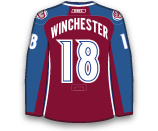
Winchester, who has not yet played yet this season after suffering a concussion in the preseason, appears poised to play Tuesday against the visiting San Jose Sharks. Winchester did not practice in a red jersey Monday, a good sign he is 100 percent

Raymond was not on the ice for Flames practice this morning and is expected to miss Tuesday's meeting with the Canadiens. Raymond is listed as day-to-day and expect David Jones to fill-in for Raymond tomorrow.
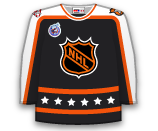
Jones has missed the last eight games with an upper-body injury that he suffered on October 9th vs. the Oilers. Jones is expected to take Mason Raymond's spot in the lineup because Raymond is dealing with an upper-body injury of his own and he is listed as questionable.
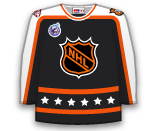
The Blues have been hit by a flu bug that has gone around the locker-room. Reaves will not play tomorrow because of the illness. He is day-to-day.

Calvert missed Sunday's game vs the Kings after suffering an upper-body injury on Friday vs. the Ducks. With Calvert going to IR the Blue Jackets have recalled Alexander Wennberg, who was sent down on Sunday.
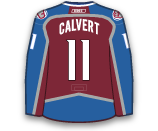
The Blues have been hit hard by illness recently and it could hold Tarasenko out of tomorrow's meeting with the Stars. He has one goal and four assists in seven games, but keep an eye on him during tomorrow's morning skate.

Nikitin did not skate in the Oilers morning skate on Monday morning and could miss tonight's meeting with the Canadiens. The Oilers classified it as a "maintenance day" and a decision on his availability for tonight will come during warmups.
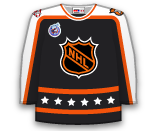
Gunnarrsson has been recovering from offseason hip surgery but has finally told the Blues that he is ready to go. He will make his debut tomorrow vs. the Stars. Gunnarsson, who was acquired from the Maple Leafs for Roman Polak and a fourth-round pick this summer will likely be paired with Barrett Jackman

Cammalleri was undergoing X-rays on his jaw this morning after being elbowed in the face in Friday's game against the Stars. There is no word whether he will be in the lineup on Tuesday or not, but if he does not play, expect Reid Boucher to make his season debut.
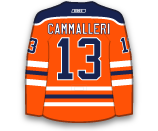
Havlat, who suffered severe face lacerations last week is reportedly dealing with other issues not related to his face and that is the reason he has been place on IR. There is no timetable for his return and the Devils recalled Reid Boucher to round-out the 23-man roster.
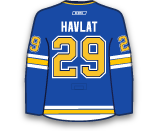
Islanders head coach Jack Capuano said that the news on Bailey was "better that we initially thought." He added that Bailey has a "good chance" to travel with the team despite dealing with a broken hand on Saturday. There is no timetable for when we can expect him to be back in the lineup, but this is better news than the original diagnosis.
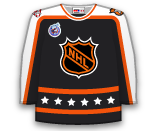
Maatta, 20, has been cleared to play until the time of the surgery. Dr. Dharmesh Vyas, the Penguins’ team physician said he will likely be able to return to the lineup within four weeks. “Obviously our first concern is for Olli and his health,” Penguins general manager Jim Rutherford said. “He is an outstanding young man and has a tremendous future ahead of him. The doctors tell us that this is a very treatable condition, and that it can be taken care of with the surgery."

Hamonic will not be in the lineup on Tuesday vs. the Jets, but head coach Jack Capuano said there is a "good chance" that Hamonic travels with the team on their upcoming five-game road-trip that starts Thursday in Colorado.

The Blues are not in action tonight, so do not be too concerned, it is likely just a maintenance day for Tarasenko. He will probably be back on the ice for the Blues morning skate tomorrow and play vs. the Stars.

Kane started skating by himself on Friday and was on the ice with his teammates this morning. Kane has missed seven games with a knee injury he suffered in the regular season opener. He has reportedly been progressing well, but likely won't be available tomorrow, but Thursday seems like a real possibility.

Kopitar left Sunday's game with an upper-body injury and did not return. Kopitar was rocked by Tim Erixon and retired to the dressing room shortly after. The Kings say they are "going to be careful" with Kopitar's injury, so there is a good chance he won't be available on Tuesday vs. the Flyers. A more detailed injury report is expected to be available tomorrow.

Jenner has been sidelined since the preseason after undergoing surgery to repair a broken hand. Jenner is nearly four weeks into a five-week timetable, so his return to the ice appears to be right on schedule. Expect him to skate with the Blue Jackets throughout the week and likely return this weekend or next week.

Atkinson missed Sunday's game because he was cut by a skate near the eye on Saturday and the swelling was too substantial for him to play. His return to practice suggests that the swelling has subsided and he could be back in the lineup on Tuesday vs. Ottawa.

Stastny is not taking part in line rushes or shooting, but he continues to skate as he works his way back from a shoulder injury. Not shooting is not an encouraging sign that he is getting close, but it is a step in the right direction.

Gonchar is three and a half weeks into a 3-5 week timetable for his return from a fractured ankle. Gonchar's return to practice is a positive, but he skated on the 'fifth line' this morning which means he likely won't be back on Tuesday. Expect an update after practice, but it looks like Gonchar won't return until Friday at the earliest.
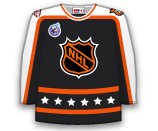
The NHL injury report is updated daily so that you can see the latest injury news ahead of puck drop in any of today’s matchups. Seeing timely updates to the NHL injury report can make a major impact on your daily fantasy sports picks and wagers on a particular game. All information provided on the NHL injury report is provided directly by the NHL and each respective franchise to ensure accuracy.
While the minimum amount of time spent on the injured reserve list is seven calendar days, there is no maximum amount of time that a player can be placed on the injured reserve list. If a player is set to be sidelined for longer than 24 calendar days or 10 NHL games, then a club may opt to place them on the long-term injured reserve instead. This allows franchises with the ability to exceed the salary cap while a player is placed on this reserve list.
No injury recovery timeline is the same as another as there are several factors that go into the rehab process for a player being affected by injury. Factors include but are not limited to, injury severity, player injury/medical history, age, as well as the location of the injury. Some injuries are able to clear up in a matter of days, while others may take an athlete out of action for the entirety of a season.